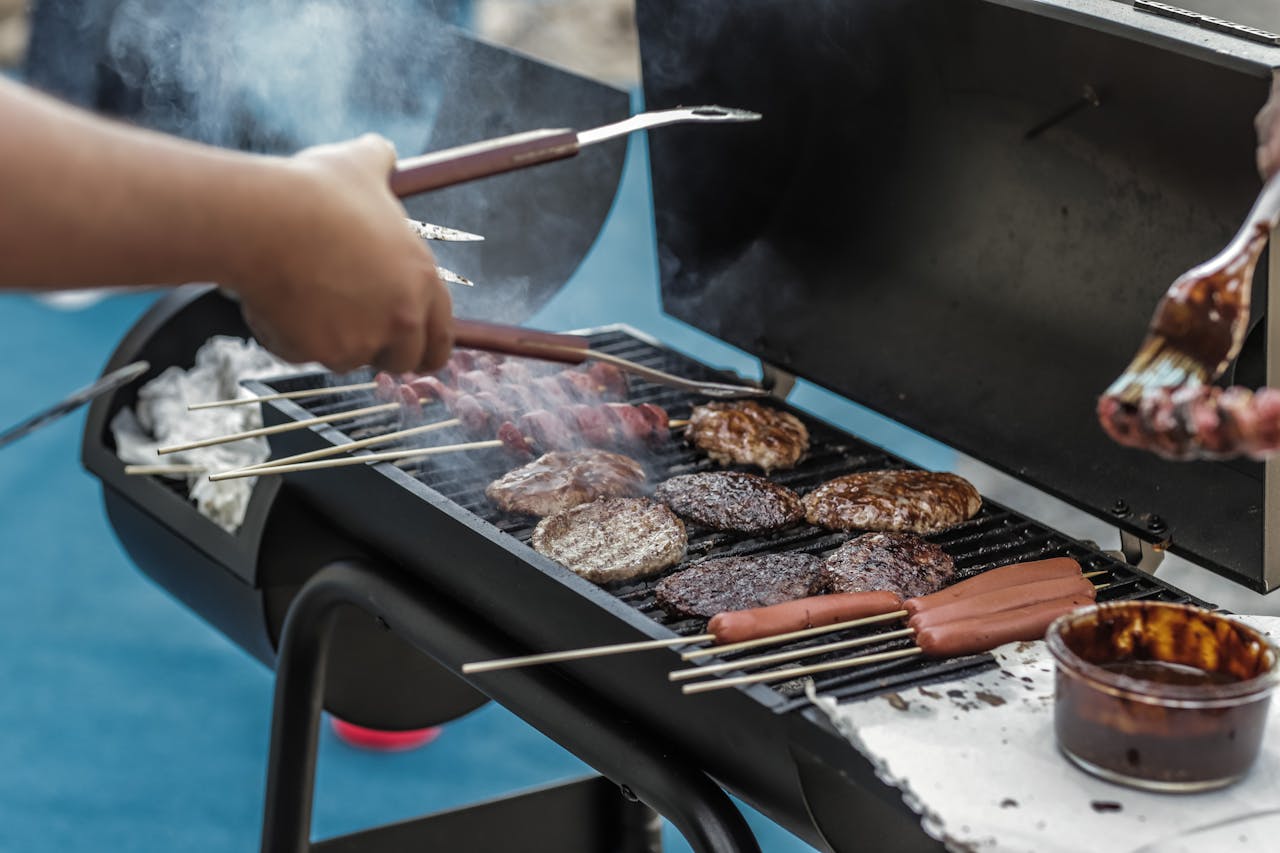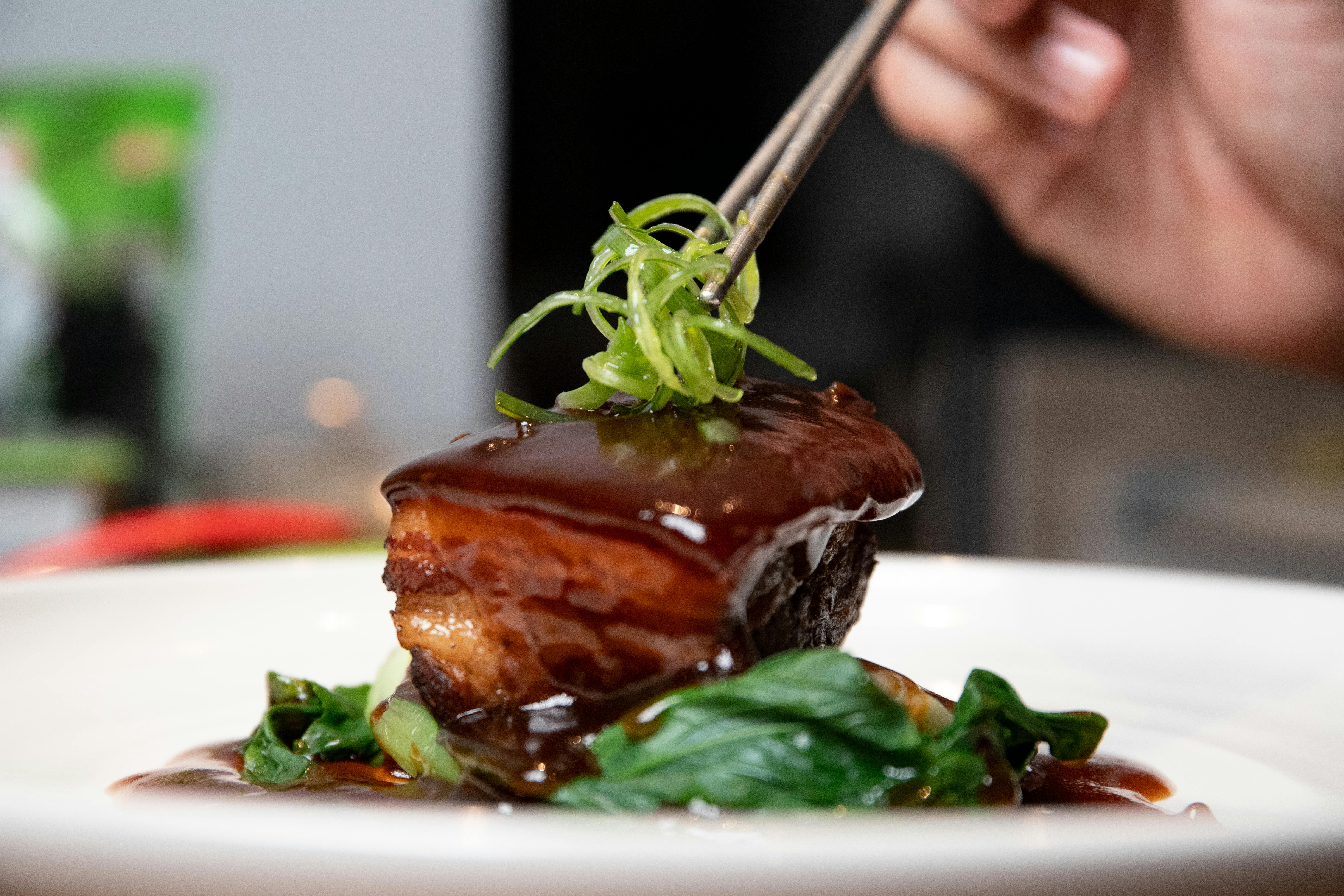Cooking Methods: Grilling vs. Roasting vs. Braising
Cooking methods greatly influence the flavor, texture, and nutritional value of food. Grilling, roasting, and braising are three popular techniques, each offering unique benefits and results. Understanding these methods can help you choose the best approach for different types of dishes and desired outcomes. Here’s an in-depth look at grilling, roasting, and braising.


Grilling
Technique: Grilling involves cooking food over direct heat, typically on an open flame or hot coals. This method is characterized by high temperatures and quick cooking times. Grilling can be done on a gas or charcoal grill, and there are also electric grills for indoor use.
Flavor and Texture: Grilling imparts a distinctive smoky flavor and creates a charred, caramelized crust on the outside of the food while keeping the inside tender and juicy. The high heat causes the Maillard reaction, enhancing the flavor profile.
Ideal Foods:
-
Meat: Steaks, burgers, sausages, chicken breasts, and ribs.
-
Seafood: Fish fillets, shrimp, and scallops.
-
Vegetables: Bell peppers, zucchini, asparagus, and corn.
-
Fruits: Pineapple, peaches, and apples.
Benefits:
-
Flavor: Imparts a rich, smoky taste.
-
Speed: Cooks food quickly.
-
Versatility: Suitable for a wide range of foods.
Tips:
-
Preheat the Grill: Ensure the grill is hot before adding food.
-
Oil the Grates: Prevent sticking by oiling the grates or the food.
-
Monitor Temperature: Avoid burning by controlling the heat and flipping food as needed.
Roasting
Technique: Roasting involves cooking food in an oven using dry heat, typically at temperatures between 300°F and 450°F (150°C to 230°C). Food is usually placed on a rack, baking sheet, or roasting pan, allowing hot air to circulate evenly around it.
Flavor and Texture: Roasting produces a crispy, golden-brown exterior while keeping the inside moist and tender. The even, consistent heat of the oven allows for thorough cooking and caramelization of the natural sugars in the food.
Ideal Foods:
-
Meat: Whole chickens, turkeys, beef roasts, and pork loins.
-
Vegetables: Potatoes, carrots, Brussels sprouts, and root vegetables.
-
Other: Nuts and seeds for added flavor.
Benefits:
-
Even Cooking: Ensures thorough cooking.
-
Crispness: Creates a crispy exterior.
-
Convenience: Minimal monitoring needed compared to grilling.
Tips:
-
Preheat the Oven: Ensure the oven reaches the desired temperature before adding food.
-
Use a Rack: Elevate food for even cooking and air circulation.
-
Baste or Toss: Baste meats or toss vegetables periodically to keep them moist and flavorful.
Braising
Technique: Braising combines both dry and moist heat. Food is first seared at a high temperature to brown the exterior, then cooked slowly in a covered pot with a small amount of liquid (such as broth, wine, or water) at a low temperature.
Flavor and Texture: Braising tenderizes tough cuts of meat and melds flavors together. The long, slow cooking process breaks down collagen in the meat, resulting in a tender, juicy texture and rich, deep flavors.
Ideal Foods:
-
Meat: Beef brisket, pork shoulder, lamb shanks, and chicken thighs.
-
Vegetables: Root vegetables, cabbage, and beans.
-
Other: Tougher greens like collards and kale.
Benefits:
-
Tenderizes Tough Cuts: Makes tougher, more economical cuts of meat tender and flavorful.
-
Flavor Development: Deep, rich flavors develop during slow cooking.
-
Versatility: Can be done on the stovetop, in the oven, or in a slow cooker.
Tips:
-
Sear First: Brown the meat to develop flavor before adding liquid.
-
Low and Slow: Cook at a low temperature for an extended period.
-
Monitor Liquid Levels: Ensure there’s enough liquid to keep the food moist throughout the cooking process.


Grilling, roasting, and braising each offer distinct advantages and can be used to achieve different culinary results. Grilling is perfect for quick, flavorful meals with a smoky taste and charred texture. Roasting is ideal for evenly cooked dishes with a crispy exterior and tender interior. Braising excels at transforming tough cuts of meat into succulent, flavorful meals through slow, moist cooking. By understanding and utilizing these methods, you can enhance your cooking repertoire and enjoy a variety of delicious, well-prepared dishes.












